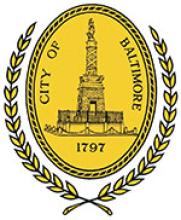
Fast, affordable Internet access for all.

Baltimore's City Council has decided it's time to move forward with a plan for city-owned fiber and they are putting pen to paper to get the ball rolling.
Since 2010, we have covered Baltimore's efforts to improve connectivity for businesses and residents. For a time, they expected FiOs from Verizon but when the provider announced it would not be expanding its network, Baltimore began to explore a Plan B.
Plan B included a publicly owned option, possibly making use of fiber assets already had in place. Mayor Stephanie Rawlings-Blake has supported taking steps to improve connectivity for Baltimore's economy, education, and general livability. A crowd funding initiative from the Baltimore Broadband Coalition has raised over $20,000 and the community has commissioned several studies. Baltimore even has a city broadband czar.
City Leaders Push On
Members of the City Council have recently renewed the call to action. Council Member Mary Pat Clarke introduced a resolution in September calling on the city to quickly develop a broadband plan. The resolution calls for fiber to all homes, businesses, and institutions in Baltimore in order to bring better connectivity to low-income households, improve economic development, and improve options for anchor institutions.
The resolution has been referred to the Departments of Planning, Transportation, Public Works, Finance, City Public School System, and is now in the Mayor's Office of Information Technology.
Westminster Inspires Immediate Action
A recent Baltimore Sun article about the resolution reports that city leaders looked to Westminster for inspiration. With only 18,000 people, Westminster has struck up a partnership with Ting to provide gigabit connectivity to residents and businesses via its publicly-owned fiber network.
As a major urban center, Baltimore faces a different set of challenges but a recent study suggests that the city could use existing municipal fiber infrastructure as a starting point. The Inter-County Broadband Network, which includes at least 122 miles around Baltimore, can also be integrated into the city's efforts.
In fact, two recent city-commissioned studies suggest investing to improve connectivity to attract the high-tech industry is a must. Otherwise, Baltimore will be left behind other communities that can provide the kind of high-speed environment companies require to bring new jobs to town.
Thirteen City Council members signed on to Clarke's resolution; it seems they feel the time to act is now. The resolution clearly states that the plan for a fiber network should not be delayed because "timely execution is critical."
"I'm sure we have enough studies now to do the unthinkable — move ahead," Clarke said.
